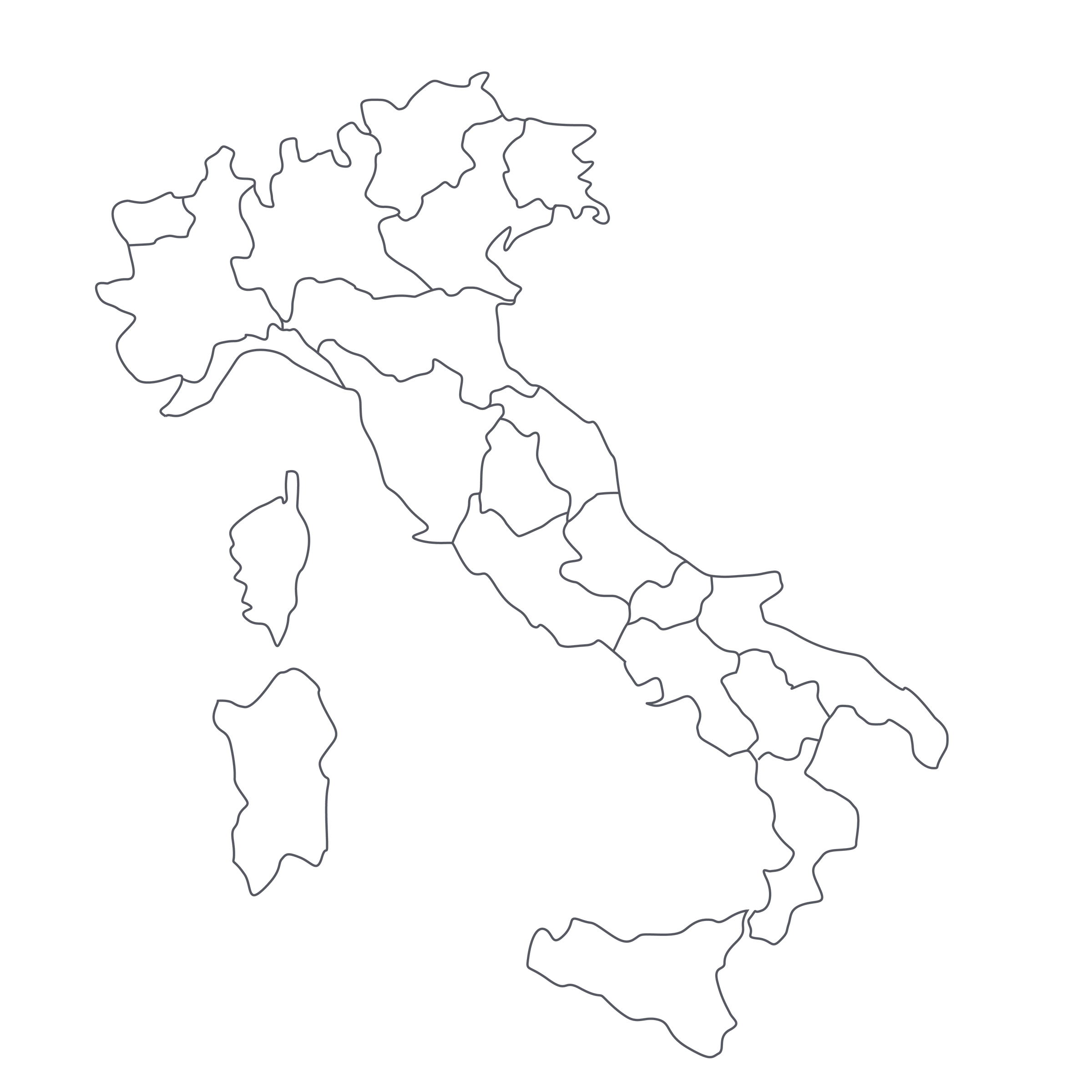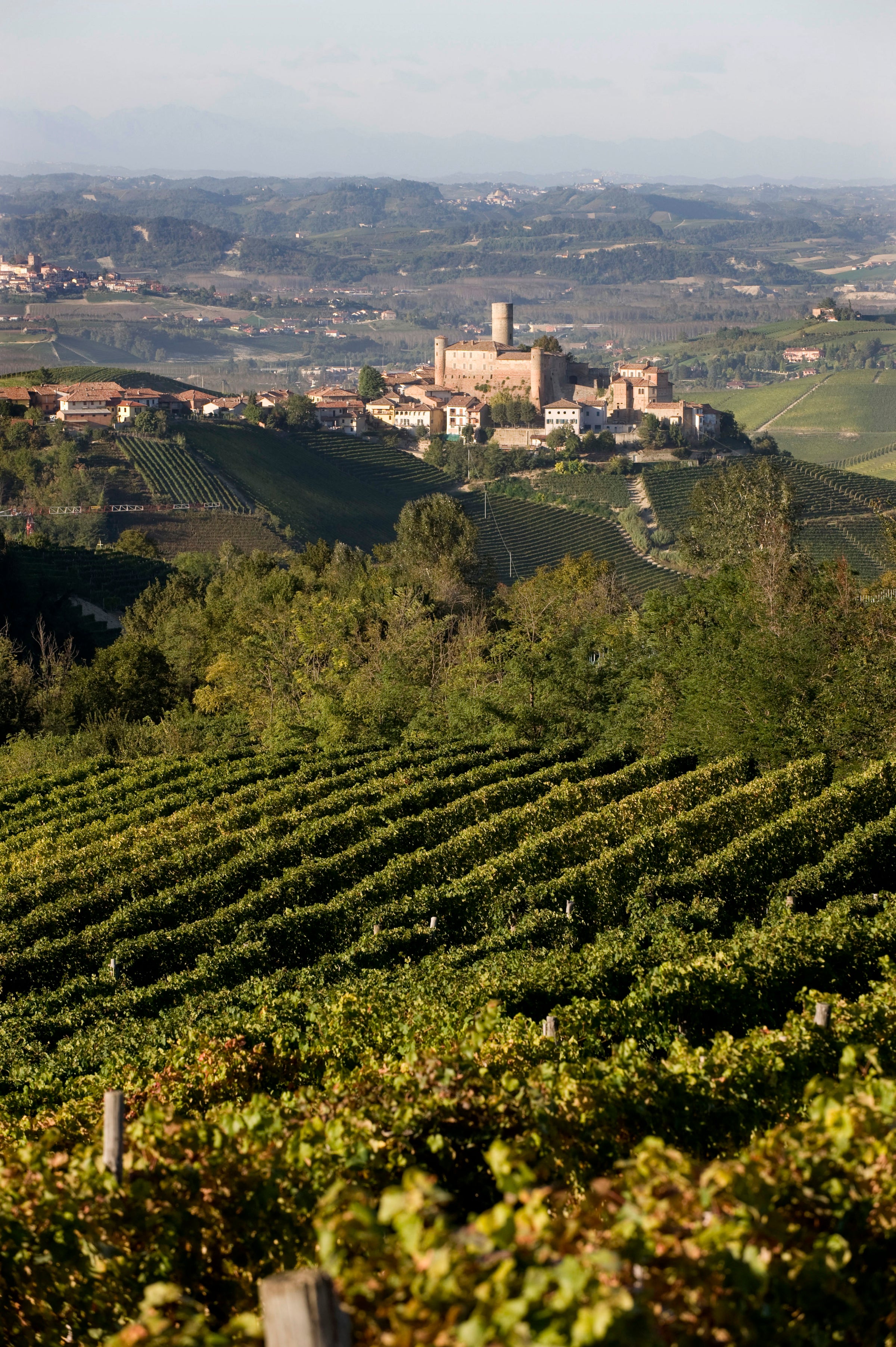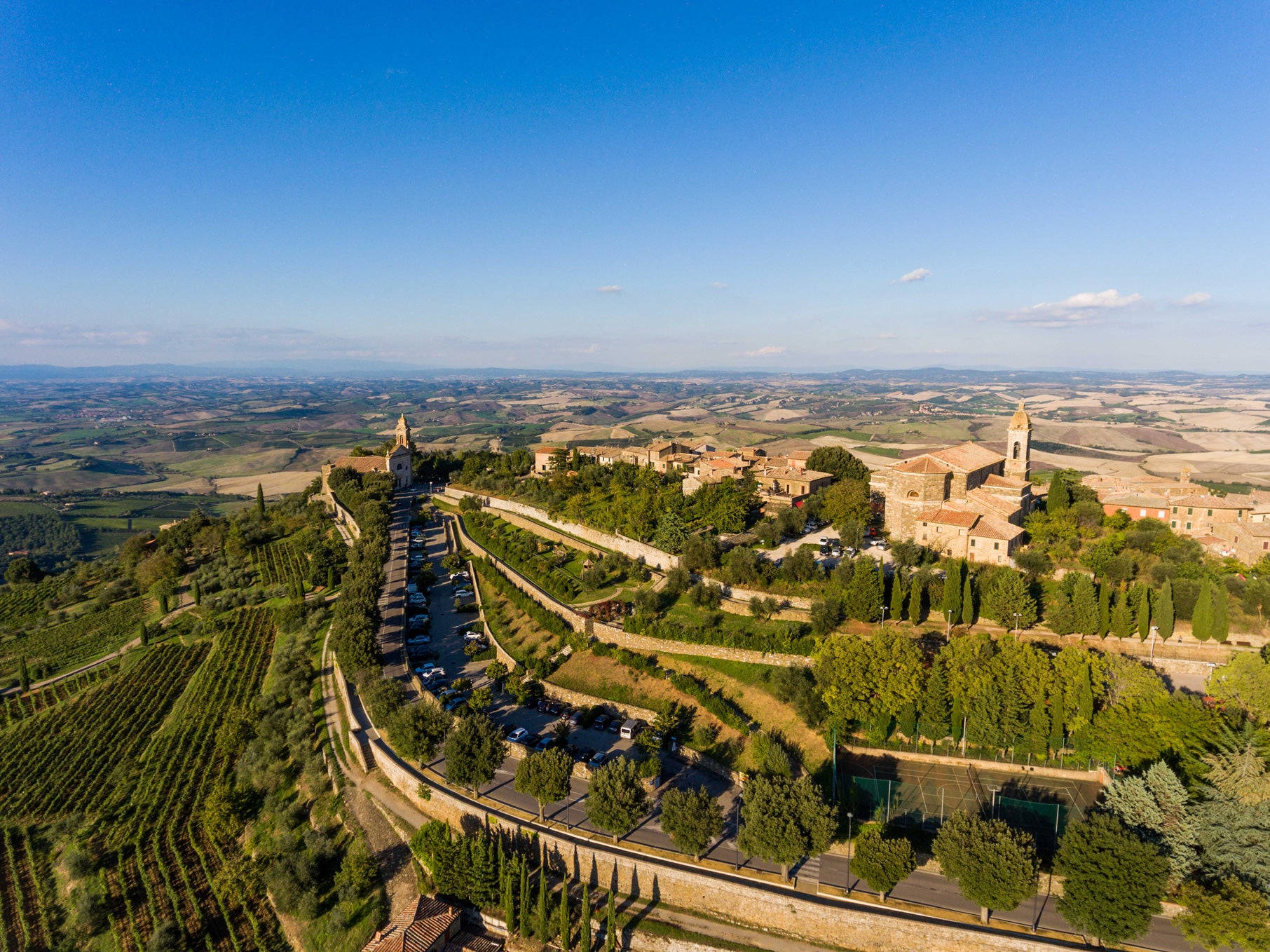In the spirit of new beginnings, I bring you our first Daily Offer of a dry Lambrusco from the heartland of Emilia-Romagna, Italy. It shouldn’t have taken this long, given the warm embrace these wines have gotten from sommeliers everywhere, but what can I say: Better late than never, and you couldn’t ask for a more authentic, artisanal, value-packed example than this special bottling from Villa di Corlo.
It features the signature Lambrusco sub-variety of the Modena area, Lambrusco Grasparossa, which is known for producing the boldest, darkest, most fruit-saturated versions of this classic, effervescent red—the wine you’ll find on every osteria table in name-brand food towns such as Reggio-Emilia (home of Parmigiano), Parma (prosciutto central), and Modena (balsamic vinegar). For all its abundant fruit and inky color, what “Rolfshark” is all about is bright, mineral, low-alcohol refreshment, along with unparalleled versatility with food. It is essential drinking for anyone who loves Italian food and culture, not to mention an instant party the moment the cork is pulled. As for the price, well, it’s a small one to pay for limited-production, organically farmed, real-deal dry Lambrusco. Sometimes, you get farmer’s market quality at a supermarket price—doesn’t that feel good?
This is the ultimate Italian table wine, although it does carry an “official” designation: the Lambrusco Grasparossa di Castelvetro DOC (Denomination of Controlled Origin). There are numerous sub-varieties, or biotypes, of the Lambrusco grape grown throughout Emilia-Romagna, one of which is Lambrusco Grasparossa, which is mainly grown in 13 communes south of the city of Modena (including the village of Castelvetro di Modena, for which the DOC is named). This area marks a point at which Emilia-Romagna’s broad, flat Pò River plain transitions to pre-Apennine foothills, giving the Villa di Corlo vineyards a little rise to them—up to 300 meters’ elevation in some places, with a little limestone creeping into the rich clay soils. Proprietor Antonia Munari has been on the leading edge of sustainability in a region long associated with industrial-scale production: The winery facility is solar-powered and carbon-neutral, while the 25 hectares of vineyards are farmed organically.
So, this is not your father’s (or grandfather’s) Lambrusco. In fact, I’m not going to bother commenting on Lambrusco’s checkered history in the US market. I think we’re way past that. What was once more of a confection designed for sweet-toothed American palates has now found an eager audience among real wine aficionados, especially those who appreciate brisk acidity and a more versatile, lighter-weight frame. Although Lambrusco’s delicate effervescence (derived either from re-fermentation in bottle or larger tanks) makes it a great choice for an apéritif, this wine’s true calling is as a partner to food—first and foremost the salumi and cheeses that have made Emilia-Romagna world famous, but also pizza, pasta, and pretty much anything else you can think of. Lots of fat-cutting acidity and a delicate nip of tannin are this wine’s aces in the hole, along with its modest (11%) alcohol content.
And there’s another something special about “Rolfshark,” which, like most Lambruscos, does not carry its vintage date in a prominent place; the vintage, 2019, takes the form of a “lot number” on the back label, as Villa di Corlo produces fresh batches to order for its US importer. The whale shark depicted on the label was painted by Dutch-Canadian architect Rolf Kielman, an Italian wine aficionado who, with Villa di Corlo’s Antonia Munari, arranged for proceeds from the wine’s sales to go to 52kids.org, a Ugandan children’s charity in which he is deeply invested.
Pull the cork on this ink-hued beauty and pour it into all-purpose stems at around 50 degrees (I typically keep Lambrusco in the refrigerator and then leave it out after pouring the first glasses). You’ll see it displays a nearly opaque purple-ruby core with a kind of pomegranate red peeking out in the delicate mousse—this is a classic frizzante (semi-sparkling), meaning the atmospheric pressure is much lower than that of a Champagne, and over time the sparkle dissipates to the point where it is barely perceptible. The aromas and flavors are driven by a powerful blast of dark fruit—muddled blackberry, blueberry, pomegranate—balanced by a distinct iron-like minerality and black pepper spice typical of Lambrusco wines. While many such wines go overboard on the fruity at the expense of the savory, this one finds the perfect balance, and while it deep color might suggest something fuller and richer, the key takeaway here is invigorating freshness and a kind of weightlessness. That’s what makes it such a great vino da tavola, so if you’re really wanting to bring a little Italian conviviality into your life during these dark days, get yourself a sausage pizza or make your favorite lasagna recipe and pop a bottle of this. Now’s the time. Enjoy!






